Hans Danuser on:
[Wikipedia]
[Google]
[Amazon]
Hans Danuser (born in 1953 in
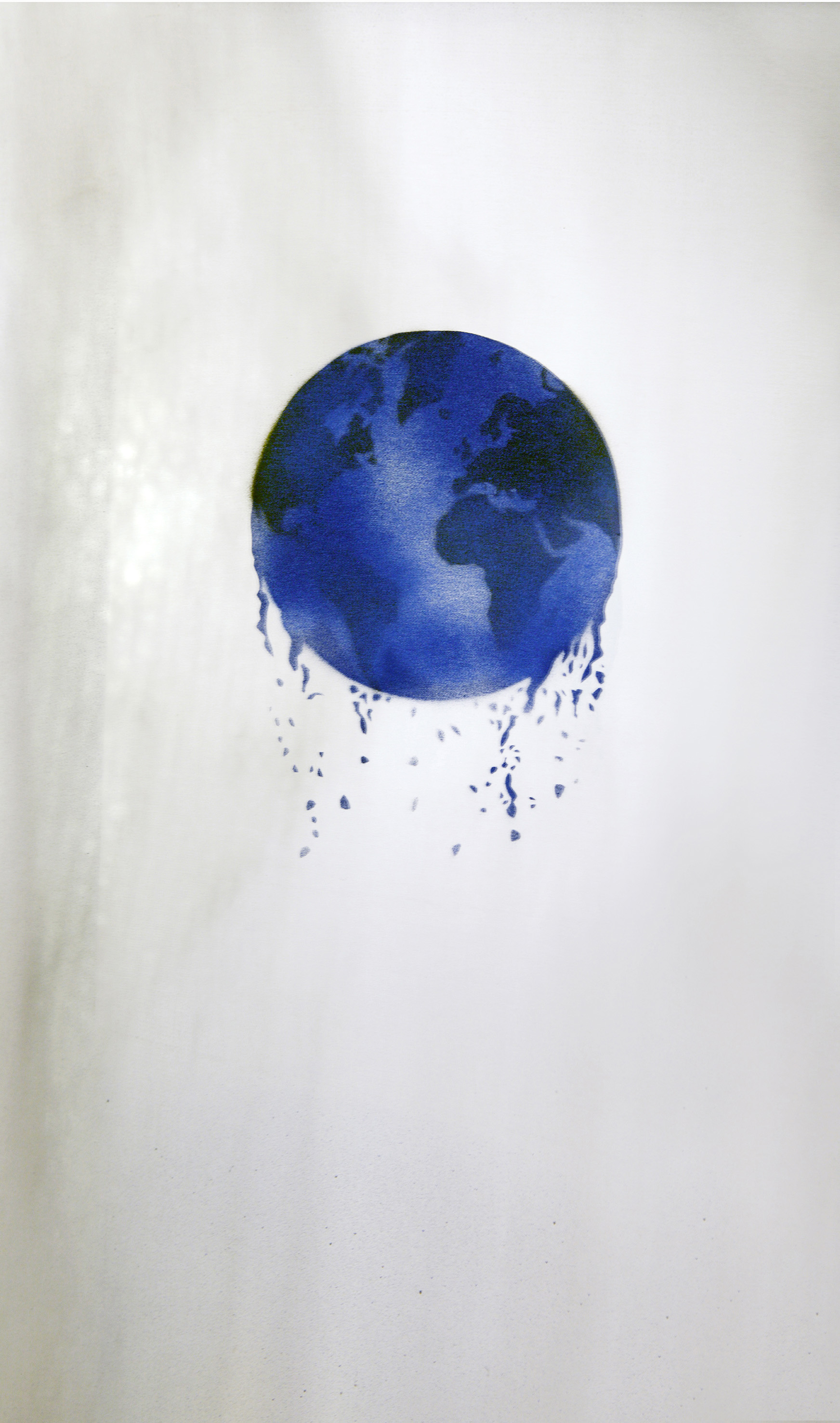 The series of works consists of found and staged stencil paintings, created by means of paint-spray cans on different supports, at the intersection of public and private space. They have been photographed since the 1980s in various cities in Europe and the United States. The ephemeral in the existence of the stencil images on physical substrates is taken up by Danuser's photography and transformed by means of digital image processing and sublimation printing technique on aluminum, into images that in their brilliantly reflective appearance, suggest ephemeral and digital screen surfaces (Peer 2019).
* Out of Paradies (1980s-2019)
The series of works consists of found and staged stencil paintings, created by means of paint-spray cans on different supports, at the intersection of public and private space. They have been photographed since the 1980s in various cities in Europe and the United States. The ephemeral in the existence of the stencil images on physical substrates is taken up by Danuser's photography and transformed by means of digital image processing and sublimation printing technique on aluminum, into images that in their brilliantly reflective appearance, suggest ephemeral and digital screen surfaces (Peer 2019).
* Out of Paradies (1980s-2019)

 The ''Matographs – The-One-Million-Pound-Projekt'' (work in progress) was developed with the research departments of Ciba-Geigy (today
The ''Matographs – The-One-Million-Pound-Projekt'' (work in progress) was developed with the research departments of Ciba-Geigy (today

 The Counting Out Rhymes project on the subject of ''Entscheidungsfindung – Decision taking'' (work in progress) involves video stations and art-in-architecture. Danuser is interested in the approaches and models used in taking decisions as a social and political instrument, ranging from mathematical theory to the practical counting-out rhymes of children. The rhymes – "a mixtum compositum of reason and imagination" – are as significant as mathematical formulae and physical laws inasmuch as they are grounded in “nonrational processes of taking decisions” and therefore reflect the fundamental structure of contemporary models of thought.
* Joggeli (Nationale Suisse, Basel, 2014)
* Akka Bakka (Zurich Department of Health, 2013)
* Piff Paff Puff (Prime Tower, 2010–2012)
* Insert-Du (2009)
* Video installation (since 2008)
The Counting Out Rhymes project on the subject of ''Entscheidungsfindung – Decision taking'' (work in progress) involves video stations and art-in-architecture. Danuser is interested in the approaches and models used in taking decisions as a social and political instrument, ranging from mathematical theory to the practical counting-out rhymes of children. The rhymes – "a mixtum compositum of reason and imagination" – are as significant as mathematical formulae and physical laws inasmuch as they are grounded in “nonrational processes of taking decisions” and therefore reflect the fundamental structure of contemporary models of thought.
* Joggeli (Nationale Suisse, Basel, 2014)
* Akka Bakka (Zurich Department of Health, 2013)
* Piff Paff Puff (Prime Tower, 2010–2012)
* Insert-Du (2009)
* Video installation (since 2008)
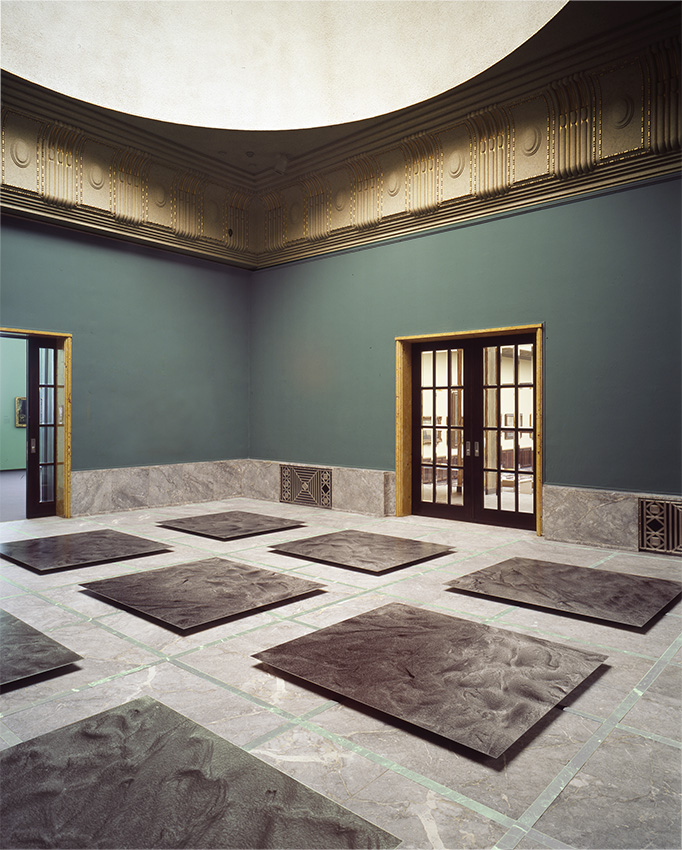
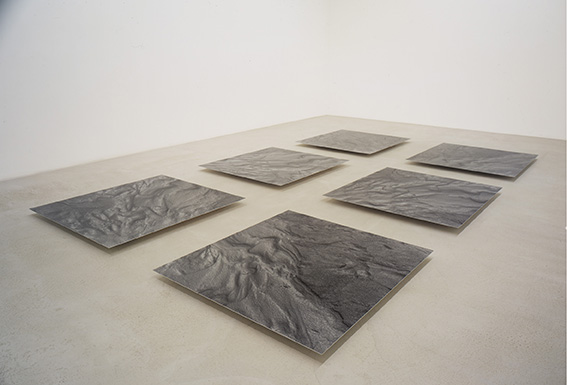 ''The Erosion Project'' (work in progress) conducts research into the erosion of natural and cultivated landscapes which takes the shape of a clear, reduced aesthetic. 'The project consists of three series: floor installations, ''Erosion I-VII'' (2000–2006); ''Modeling Erosion'' (2003–2007), created in collaboration with the
''The Erosion Project'' (work in progress) conducts research into the erosion of natural and cultivated landscapes which takes the shape of a clear, reduced aesthetic. 'The project consists of three series: floor installations, ''Erosion I-VII'' (2000–2006); ''Modeling Erosion'' (2003–2007), created in collaboration with the

 The photographs in the Frozen Embryo Series (1996–2000) have their origins in medical laboratories and gene research. These works find Danuser playing with the opportunities presented by analogue photography: he takes a single negative (which he calls the “original”) and, by turning and mirroring it in the darkroom, generates from it a number of other images, which he calls “one-offs”. To reinforce this impression, Danuser chose the square as format for his images, slightly stretched to 140 cm x 150 cm. ''The Frozen Embryo Series'' was first shown at the Kunsthaus Zurich in 1996. Günter Metken writes in the exhibition catalogue: “Without being explicit, Hans Danuser's work addresses the classical problem – and paradox – of painting: the perception of nature and its reproduction, the tension between surface and depth, volume and two-dimensionality, foreground and background, microscopy and totality, vision and the sense of touch. The artist actualises these issues and yet his stream of drifting shapes reminds us of Monet's Water Lilies. Our gaze wanders, roams, follows winding shapes in an ecstasy of sensual expansion and refinement.”
* Frozen-Embryo-Installation (1996)
The photographs in the Frozen Embryo Series (1996–2000) have their origins in medical laboratories and gene research. These works find Danuser playing with the opportunities presented by analogue photography: he takes a single negative (which he calls the “original”) and, by turning and mirroring it in the darkroom, generates from it a number of other images, which he calls “one-offs”. To reinforce this impression, Danuser chose the square as format for his images, slightly stretched to 140 cm x 150 cm. ''The Frozen Embryo Series'' was first shown at the Kunsthaus Zurich in 1996. Günter Metken writes in the exhibition catalogue: “Without being explicit, Hans Danuser's work addresses the classical problem – and paradox – of painting: the perception of nature and its reproduction, the tension between surface and depth, volume and two-dimensionality, foreground and background, microscopy and totality, vision and the sense of touch. The artist actualises these issues and yet his stream of drifting shapes reminds us of Monet's Water Lilies. Our gaze wanders, roams, follows winding shapes in an ecstasy of sensual expansion and refinement.”
* Frozen-Embryo-Installation (1996)
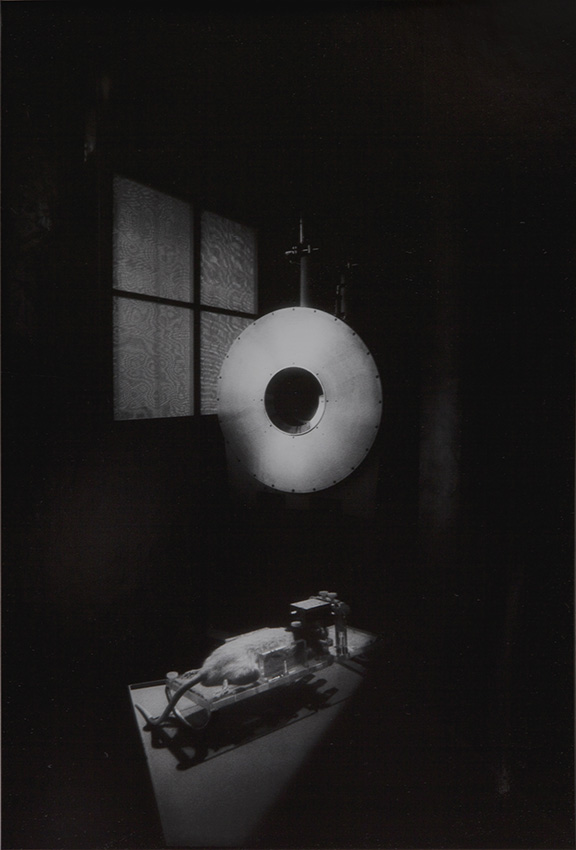
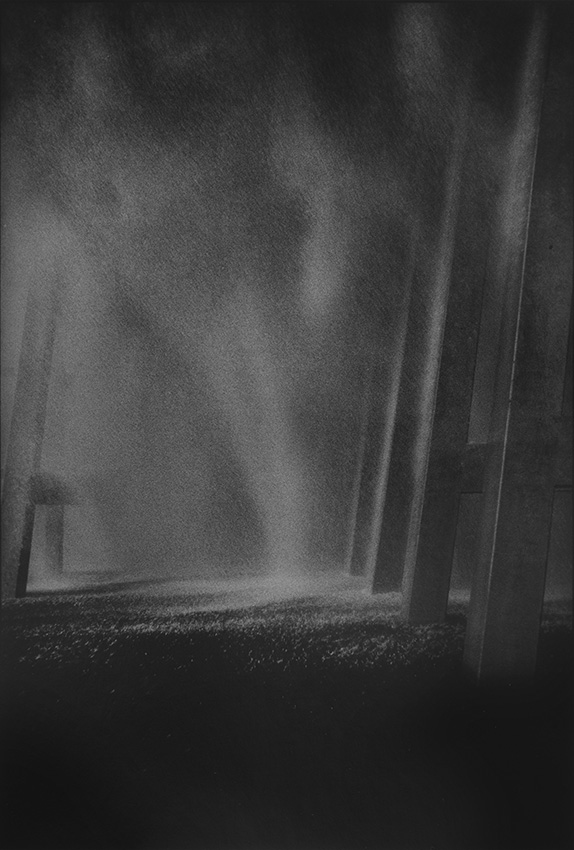 Danuser worked for ten years on seven series of images, which he compiled in 1989 under the title ''In Vivo'' and presented to the public for the first time at the Kunstmuseum Aarau; the exhibition was curated by Beat Wismer. Taken in Europe and the US, the photographs in ''In Vivo'' are arranged in seven sections: A-Energie, Medizin I, Gold, Medizin II, Chemie I, Los Alamos, Chemie II (Nuclear Energy, Medicine I, Gold, Medicine II, Chemistry I, Los Alamos, Chemistry II). Depicting a variety of workplaces in research and production facilities, the work affords insights into taboo areas of late-industrial Western society without showing the people themselves. The images gauge the ambivalence of photography between documentation and fiction. The work has appeared in a book published by Lars Müller in 1989, also titled ''In Vivo''.
* In Vivo (1980–1989), 93 black-and-white photographs
Danuser worked for ten years on seven series of images, which he compiled in 1989 under the title ''In Vivo'' and presented to the public for the first time at the Kunstmuseum Aarau; the exhibition was curated by Beat Wismer. Taken in Europe and the US, the photographs in ''In Vivo'' are arranged in seven sections: A-Energie, Medizin I, Gold, Medizin II, Chemie I, Los Alamos, Chemie II (Nuclear Energy, Medicine I, Gold, Medicine II, Chemistry I, Los Alamos, Chemistry II). Depicting a variety of workplaces in research and production facilities, the work affords insights into taboo areas of late-industrial Western society without showing the people themselves. The images gauge the ambivalence of photography between documentation and fiction. The work has appeared in a book published by Lars Müller in 1989, also titled ''In Vivo''.
* In Vivo (1980–1989), 93 black-and-white photographs
Hans Danuser
at the *
Hans Danuser
Piece in Kulturzeit on
Chur
, neighboring_municipalities= Arosa, Churwalden, Tschiertschen-Praden, Domat/Ems, Felsberg, Malix, Trimmis, Untervaz, Pfäfers
, twintowns = Bad Homburg (Germany), Cabourg (France), Mayrhofen (Austria), Mondorf-les-Bains (Lux ...
) is a Swiss artist and photographer. His first major work, the cycle ''In Vivo'', brought him international fame, therein he broke several societal taboos with respect to genetic research and nuclear physics. Since the 1990s, in addition to his photographic studies, Danuser has focused increasingly on transdisciplinary (research) projects in the arts and sciences.http://www.collegium.ethz.ch/ueber-uns/collegium-helveticum/personen/hans-danuser/
Oeuvre
Danuser has been invited to contribute to international events such as the biennales in Venice and Lyon. He is one of the first photographers to have taken the conceptually compelling step of presenting his large-format tableaux on the floor in a museum exhibition. In the 1980s Danuser embarked on his cycle ''In Vivo'', completing it in 1989. Contemporaneously he produced architectural photographs in the project ''Partituren und Bilder''/''Scores and Pictures''. In 1990 Danuser won the competition for the large-scale design of the walls at the University of Zurich-Irchel, which led to the ''Institutsbilder'' (1992). He later completed another project in an architectural context, the ''Schiefertafel Beverin'' (2000–2001). ''The Frozen Embryo Series'', made in the 1990s, a follow-up of ''In Vivo'', also prefigured two ongoing works, ''The Erosion Project'' and ''Entscheidungsfindung – Decision taking''.Beat Stutzer. Hans Danuser’s Lettered images, in: Flurina Paravicini et al. (eds.), Hans Danuser – The Counting Out Rhymes Project über Entscheidungs Findung / Decision Taking. Lucerne: Periferia, 2008, p. 58-61.Biography
After working in Zurich for the German advertising and fashion photographer Michael Lieb from 1972 to 1974, Danuser began experimenting with light-sensitive emulsion at the ETHZ Federal Institute of Technology Zurich. *1979–1989: work on the cycle ''In Vivo'' *1980s and 1990s: working in Zurich and New York *1986: Artist in residence in Los Alamos. *Since the 1990s: large-format series of photographs as installations in space and transdisciplinary projects in the arts and sciences. *Spring 2009: first Visiting Artist at the Centre for Studies in the Theory and History of Photography at the Institute of Art History of the University of Zurich and subsequently visiting professor at theETH Zurich
(colloquially)
, former_name = eidgenössische polytechnische Schule
, image = ETHZ.JPG
, image_size =
, established =
, type = Public
, budget = CHF 1.896 billion (2021)
, rector = Günther Dissertori
, president = Joël Mesot
, a ...
.
Danuser is primarily based in Zurich
Zurich (; ) is the largest city in Switzerland and the capital of the canton of Zurich. It is located in north-central Switzerland, at the northwestern tip of Lake Zurich. , the municipality had 443,037 inhabitants, the urban area 1.315 mill ...
.
Series and projects
Out of Paradies
 The series of works consists of found and staged stencil paintings, created by means of paint-spray cans on different supports, at the intersection of public and private space. They have been photographed since the 1980s in various cities in Europe and the United States. The ephemeral in the existence of the stencil images on physical substrates is taken up by Danuser's photography and transformed by means of digital image processing and sublimation printing technique on aluminum, into images that in their brilliantly reflective appearance, suggest ephemeral and digital screen surfaces (Peer 2019).
* Out of Paradies (1980s-2019)
The series of works consists of found and staged stencil paintings, created by means of paint-spray cans on different supports, at the intersection of public and private space. They have been photographed since the 1980s in various cities in Europe and the United States. The ephemeral in the existence of the stencil images on physical substrates is taken up by Danuser's photography and transformed by means of digital image processing and sublimation printing technique on aluminum, into images that in their brilliantly reflective appearance, suggest ephemeral and digital screen surfaces (Peer 2019).
* Out of Paradies (1980s-2019)
Matographs – The-One-Million-Pound-Project


Novartis
Novartis AG is a Swiss-American multinational pharmaceutical corporation based in Basel, Switzerland and
Cambridge, Massachusetts, United States (global research).name="novartis.com">https://www.novartis.com/research-development/research-loc ...
), Basel, and Bayer Werke / Agfa Gevaert, Leverkusen (today AGFA). By patenting "matographs," a new photographic process, Danuser pursued the goal of being able to "process substrate with color according to isideas before coating it with a photographic black-and-white emulsion (Sadkowsky 2018, 7), in contrast to commercially available photographic papers, which have a white layer support. Thus, at the turn from analog to digital photography, he succeeds in "introduce nga new perspective, namely direct ngthe photographer's gaze to the otherwise unnoticed background f a photographic print
F, or f, is the sixth letter in the Latin alphabet, used in the modern English alphabet, the alphabets of other western European languages and others worldwide. Its name in English is ''ef'' (pronounced ), and the plural is ''efs''.
Hist ...
"(Folkers, 2018, 86).
* The Party is over (1984/2016)
* Matographs and Volcanoes (1996-2018)
* AT Matographs (1997)
* Matographs, part I (1993-1996)
Previous work
* Delta (1990-1996)Entscheidungsfindung – Decision taking


Previous work
* Wildwechsel (1993)The Erosion Project


ETH Zurich
(colloquially)
, former_name = eidgenössische polytechnische Schule
, image = ETHZ.JPG
, image_size =
, established =
, type = Public
, budget = CHF 1.896 billion (2021)
, rector = Günther Dissertori
, president = Joël Mesot
, a ...
Institute of Geotechnical Engineering; and ''Landschaft in Bewegung/Moving Landscape'' (2008–), a collaboration with the ETHZ
(colloquially)
, former_name = eidgenössische polytechnische Schule
, image = ETHZ.JPG
, image_size =
, established =
, type = Public
, budget = CHF 1.896 billion (2021)
, rector = Günther Dissertori
, president = Joël Mesot
, ac ...
Laboratory of Inorganic Chemistry as part of the research project ''Farbe und Fotografie''/''Colour and Photography''. Earlier works were seminal to the series, specifically Landschaften (1993–1996) and the art-in-architecture project ''Schiefertafel Beverin'' (2001).
* Erosion I-VII (2000–2006)
* Modeling Erosion (2003–2007)
* Landschaft in Bewegung/Moving Landscape (since 2008)
Previous work
* Landschaften (1993–1996) * Strangled Bodies (1995, 2001) * Schiefertafel Beverin (2000–2001)Frozen Embryo Series


Scores and Pictures
1988 found Danuser for the first time showing the pictures in the Architekturgalerie Luzern under the title ''Partituren und Bilder'' (''Scores and Pictures''), which he had been commissioned to photograph by thePritzker
The Pritzker family is an American family engaged in entrepreneurship and philanthropy, and one of the wealthiest families in the United States of America (staying in the top 10 of ''Forbes'' magazine's "America's Richest Families" list since the ...
prizewinning architect Peter Zumthor
Peter Zumthor (; born 26 April 1943) is a Swiss architect whose work is frequently described as uncompromising and minimalist. Though managing a relatively small firm, he is the winner of the 2009 Pritzker Prize and 2013 RIBA Royal Gold Medal ...
in 1986–1988: the ''Atelier des Architekten'' (Architect's studio) in Haldenstein, the ''Schutzbauten über römischen Funden'' (protective pavilions above Roman finds) in Chur and the ''Kapelle Sogn Benedetg'' (Chapel of St. Benedict) in the Surselva region of Canton Graubünden. The artist-cum-photographer was given carte blanche by the architect. In his essay in the book ''Zumthor sehen. Bilder von Hans Danuser – Nachdenken über Architektur und Fotografie'', Philip Ursprung, professor of contemporary art and architectural history, discusses the impact that Danuser's photographs in Partituren und Bilder exerted on the depiction of architecture in photography: “With his photographs of Sogn Benedetg, Danuser radically altered the conventions of architectural photography. Instead of neutral documentation, he was interested in personal interpretation. And instead of reducing the phenomenon to a photograph, he as it were dismantled the building into its component parts, like a short film, which breaks the subject down into sequences and shows it from different perspectives; today one would call this performative. These fragments offer the observer the opportunity to reconstruct the building in the imagination.”
* Partituren und Bilder. Architektonische Arbeiten aus dem Atelier Peter Zumthor (1985–1988) (Score and Pictures. Architectural work from the studio of Peter Zumthor)
* Peter Zumthor, Therme Vals, in Zusammenarbeit mit Fritz Hauser, Sounding Stones Therme Vals (1996) (Peter Zumthor, Vals Thermal Baths, in collaboration with Fritz Hauser, Sounding Stones Vals Thermal Baths)
* Zumthor sehen. Bilder von Hans Danuser (2009) (Looking at Zumthor, Pictures by Danuser)
In Vivo


Publications
Selected publications and artist books / primary literature
* Bündner Kunstmuseum Chur (ed.), Hans Danuser – Drei Fotoserien Chur: Bündner Kunstmuseum 1985. * Hans Danuser, Partituren und Bilder. Architektonische Arbeiten aus dem Atelier Peter Zumthor 1985–1988. (Publication accompanied eponymous exhibition, Architekturgalerie Luzern 2–23 October 1988, Haus der Architektur Graz, 27 July-18 August 1989). Lucerne: Architekturgalerie, 1988 *Aargauer Kunsthaus
Aargauer Kunsthaus (English: ''Aargauer Art House'') a Swiss art museum founded in 1959, and located in Aarau. The museum collection includes Swiss art from the 18th-century to the present day; and ''Naturama'', a natural history collection.
...
(ed.), Hans Danuser – In Vivo – 93 Fotografien. In Vivo. Baden: Lars Müller, 1989
* Bündner Kunstmuseum Chur (ed.), Hans Danuser. Wildwechsel. Baden: Lars Müller 1993.
* Reto Hänny, Helldunkel. Ein Bilderbuch. Frankfurt: Suhrkamp, 1994
* Delta. Fotografien 1990–1996. (Publication accompanied eponymous exhibition: Kunsthaus Zurich: 12 April–23 June 1996). Baden: Lars Müller, 1996
* Nidwaldner Museum et al. (eds.), Hans Danuser. AT (accompanied exhibition, Im Höfli, Stans, 26 October–21 December 1997), Stans, 1997.
* Danuser (photography) and Urs Stahel (text), Frost. (supplement to publication accompanying the eponymous exhibition, Fotomuseum Winterthur: 9 November 2001 – 6 January 2002). Zurich: Scalo, 2001.
* Hartmut Böhme in conversation with Hans Danuser, Die Oberflächen sind niemals stabil. In: Die neue Sichtbarkeit des Todes. eds. Thomas Macho and Kristin Marek, Berlin, with image documentation on Danuser's In Vivo, Frozen Embryo Series, Strangled Body, Erosion. Munich: Wilhelm Fink, 2008 pp. 239–273.
* Flurina Paravicini et al. (eds.), Hans Danuser – The Counting Out Rhymes Project über Entscheidungs Findung / Decision Taking, with texts by Ursula Pia Jauch and Beat Stutzer and a screen print insert by Danuser. Lucerne: Periferia, 2008.
* Hans Danuser, Entscheidungsfindung, with texts by Stefan Zweifel, Gerd Folkers and Stefan Kaiser and a conversation between the artist and Andrew D. Barbour. In: DU – Periodical for Art and Culture, issue 795/April 2009, pp. 80–107.
* Zumthor sehen. Bilder von Hans Danuser, with an essay by Philip Ursprung and a conversation between Köbi Gantenbein and Danuser. Zurich: Hochparterre bei Scheidegger & Spiess, 2009.
* Hans Danuser, Erosion und Landschaft in Bewegung, with a conversation between Christian Kerez and Danuser. In: trans 20, 2012, gta, Zurich.
* Wulf Rössler, Danuser (eds.), Burg aus Holz – das Burghölzli. Von der Irrenheilanstalt zur Psychiatrischen Universitätsklinik Zürich. Entwicklungen, Innen- und Aussensichten. NZZ Libro, Zurich 2013, .
* Danuser, Bettina Gockel (eds.), Die Neuerfindung der Fotografie. Hans Danuser – Gespräche, Materialien, Analysen (Studies in Theory and History of Photography 4). Berlin/Boston: De Gruyter 2014.
Selected secondary literature
* Urs Stahel and Guido Magnaguagno, Neue Schweizer Photographen. In: DU – Periodical for Art and Culture 8, 1985, Zurich, pp. 24–67. * Günter Metken: Die Bilder der Dinge: Die von der Oberfläche der Körper wie Häutchen sich schälen. In: Hans Danuser – Delta. (Publication accompanied eponymous exhibition: Kunsthaus Zurich: 12 April–23 June 1996). Baden: Lars Müller, 1996. * Thilo König: Hans Danuser – ‘Frost’. In: Kunstforum International no. 159 (April–May) 2002, pp. 416–417. * Beat Stutzer, Schärfe und Beharrlichkeit – zu den Bildern von Hans Danuser. In: Bündner Jahrbuch 2003. Chur: 2003. * Suzann-Viola Renninger: Ene, mene, mei. Der Künstler Hans Danuser. In: Schweizer Monatshefte. Periodical for politics, business and culture, issue 01/02, January/February 2007, p. 4 * Gisela Kuoni, Hans Danuser ‘Auszählen – The Counting Out Rhymes Project’. In: Kunstbulletin, 11/2008, Zurich, pp. 72–73. * Marco Baschera, Von der vorzeitlichen Präsenz eine Platzes. In: Präsenzerfahrung in Literatur und Kunst / Beiträge zu einem Schlüsselbegriff der ästhetischen und poetologischen Diskussion. With a picture insert on Danuser – Schiefertafel Beverin. Munich: Wilhelm Fink 2008, pp. 75–100. * Bettina Gockel, Uncalibrated: From the Standpoint of Color — Hans Danuser. In: Bettina Gockel (ed.), Colors of Photography (Studies in Theory and History of Photography 10). Berlin/Boston: De Gruyter 2021, pp. 173–200.Selected solo exhibitions
* 1985:Kunstmuseum Graubünden Kunstmuseum is a German word literally translated into English as "art museum". It may refer to:
* KUNSTEN Museum of Modern Art Aalborg, art museum in Aalborg, Denmark
* Kunstmuseum Basel, the largest art museum in Basel, Switzerland
* Kunstmuseum ...
, Chur ("Drei Fotoserien")
* 1986: Gewerbemuseum Basel ("Drei Fotoserien")
* 1986: Photoforum PasquArt, Biel
* 1988: Architekturgalerie, Lucerne ("Partituren und Bilder. Architektonische Arbeiten aus dem Atelier Peter Zumthor 1985–1988")
* 1989: Aargauer Kunsthaus
Aargauer Kunsthaus (English: ''Aargauer Art House'') a Swiss art museum founded in 1959, and located in Aarau. The museum collection includes Swiss art from the 18th-century to the present day; and ''Naturama'', a natural history collection.
...
, Aarau ("In Vivo")
* 1990: Curt Marcus Gallery, New York ("Photographs")
* 1991: Städtische Galerie im Lenbachhaus
The Lenbachhaus () is a building housing an art museum in Munich's ''Kunstareal''.
The building
The Lenbachhaus was built as a Florentine-style villa for the painter Franz von Lenbach between 1887 and 1891 by Gabriel von Seidl and was expand ...
, Munich ("In Vivo")
* 1993: Bündner Kunstmuseum, Chur ("Wildwechsel")
* 1996: Kunsthaus Zurich Kunsthaus ( German meaning "art house") may refer to:
* Kunsthaus Graz
* Kunsthaus Tacheles
* KunstHausWien
* Kunsthaus Zürich
See also
* Art gallery
* Kunsthalle
A kunsthalle is a facility that mounts temporary art exhibitions, similar to a ...
, Zurich ("Delta. Photographs 1990–1996")
* 1998: Kunstmuseum Nidwalden, Stans ("AT")
* 1999: Walter Merian Haus, Basel ("Nah und Fern")
* 2001: Fotomuseum Winterthur
Fotomuseum Winterthur is a museum of photography in Winterthur, Switzerland.
History
The museum was founded in 1993 and is dedicated to photography as art form and document, and as a representation of reality. Fotomuseum Winterthur is an art ...
, Winterthur ("Frost")
* 2003: Scalo Galerie, New York ("Frozen")
* 2003: Galerie Luciano Fasciati, Chur ("Modeling Erosion")
* 2005: Villa Garbald, Castasegna ("Projekt Garbald")
* 2006: Moscow House of Photography
The Multimedia Art Museum, Moscow (MAMM; russian: link=no, Мультимедиа Арт Музей, Москва) is a Russian state museum dedicated to the presentation and development of contemporary art related to new multimedia technologies ...
, Big Manesh, Moscow ("Erosion")
* 2008: Galerie Luciano Fasciati, Chur ("Auszählen – The Counting Out Rhymes Project")
* 2009: Galerie Luciano Fasciati, Chur ("Nachdenken über Fotografie und Architektur")
* 2012: Semper Sternwarte, ETH Zurich ("Ein Colloquium der Dinge")
* 2014: Municipio Bregaglia, Promontogno ("Uccelin gion fond dal mer")
Awards
* 1987: Canton Graubünden Recognition Award for Visual Arts * 1992:Manor Kunstpreis
Manor Cultural Prize (; ) is a Swiss fine arts prize awarded every two years by the Manor (department store) alongside art museums in 12 Swiss cities, which was founded in 1982 in Lucerne
Lucerne ( , ; High Alemannic German, High Alemannic: ''Loz ...
* 1996: Conrad Ferdinand Meyer Prize
The Conrad-Ferdinand-Meyer-Preis is a literary award in memory of Conrad Ferdinand Meyer.
The prize is given annually to up to three recipients by the ''Conrad Ferdinand Meyer-Stiftung'' in Zurich.
Laureates
*1938 Max Frisch
*1939 Franz Fisch ...
for Young Art
* 2001: Canton Graubünden Culture Prize
Stipends and studio awards
* 1974, 1976, 1983, 1985: Federal art stipend/Swiss Art Award * 1979, 1983, 1985: Study and work grants from Canton Zurich’’’…, dass sich die Grenzen verwischt haben.’ – Schauplätze und Stränge der Fotografie in Zürich, 1975– 1990’’. In: Hans Danuser, Bettina Gockel (eds.), Die Neuerfindung der Fotografie. Hans Danuser – Gespräche, Materialien, Analysen (Studies in Theory and History of Photography 4). Berlin/Boston: De Gruyter 2014, p. 224, footnote 46 * 1985: Art stipend for a residency at the City of Zurich studio in New York * 1983, 1984, 1985: Art stipend from the City of Zurich * 1991: Art stipend for a residency at the Landis & Gyr Foundation studio in London * 1996: Artist in Residence at Los Alamos Laboratories, New Mexico, USAFilm and television
* Michael Hegglin, Der Fotokünstler Hans Danuser und seine Arbeit im öffentlichen Raum. In: 10vor10 on Swiss TV SF DRS, 1993. * Michael Hegglin, Zeichen im Dunkel – Hans Danuser. In: Swiss TV SF DRS and TV broadcaster 3sat, April 1996. * Barbara Seiler, Landscape in Movement – in conversation with the artist and photographer Danuser. In: Sternstunde, Swiss TV SF TV, 18 January 2009 and 24 January 2009, video 52 min. 16 secs.: Camera, Christine Munz // Sound, Michael Ryffel // Editor and music Brian Burmann // Director René Baumann // Head of production Rahel Holenstein // SF TV editor, Marion Bornschier, a coproduction by Videoladen Zurich / Sternstunden, Swiss TV SF TV, Zurich // Cinema premiere at Kino Canva as part of the Solothurner Filmtage programme, 2009.References
External links
* *Hans Danuser
at the *
Hans Danuser
Piece in Kulturzeit on
3sat
In logic and computer science, the Boolean satisfiability problem (sometimes called propositional satisfiability problem and abbreviated SATISFIABILITY, SAT or B-SAT) is the problem of determining if there exists an interpretation that satisfies ...
, 11 April 1996 (4' 32)
{{DEFAULTSORT:Danuser, Hans
Swiss photographers
1953 births
Living people
People from Chur